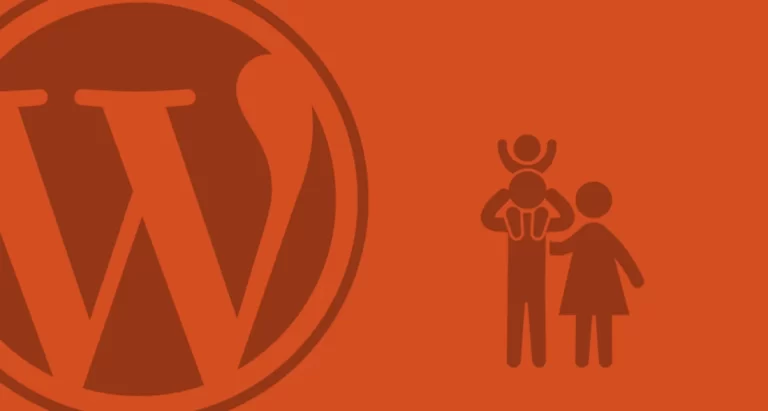Post at a Glance
When WordPress first blinked into existence in 2003, it was a modest blogging tool, a digital diary for the internet’s early adopters. Born from the ashes of b2/cafelog, a project abandoned by its creator, WordPress was the brainchild of Matt Mullenweg and Mike Little. It was simple, open-source, and free—a platform that let anyone with a story share it with the world.
Fast forward to 2025, and WordPress powers over 43% of the web, from personal blogs to global e-commerce giants. The keyword here is transformation, and Evolution of WordPress has undergone a remarkable one. Let’s take a heartfelt journey through the years to see how WordPress has evolved into the powerhouse it is today.
The Evolution of WordPress Early Days: Simplicity and Community (2003–2007)
In its infancy, WordPress was a breath of fresh air for bloggers. The internet was still a bit clunky, driven space, and content management systems (CMS) were either complex or costly. WordPress offered a lightweight alternative with a user-friendly interface and a focus on blogging. Its first release, version 0.7, introduced core features like a WYSIWYG editor and permalink structures, making it easy to create and share content.
What set WordPress apart was its open-source ethos. Developers worldwide could contribute, and they did. By 2005, WordPress 1.5 introduced themes, allowing users to customize their site’s look without touching code. The plugin architecture also debuted, letting developers extend functionality. The community grew, and with it, the keyword of innovation became synonymous with WordPress. Forums buzzed with enthusiasts sharing tips, plugins, and themes, fostering a sense of belonging that remains a hallmark of WordPress today.

WordPress 1.0 Dashboard named for Jazz Great Miles Davis
The Evolution of WordPress The Rise of Flexibility: Themes and Plugins (2008–2012)
By the late 2000s, WordPress was no longer just a blogging platform—it was a CMS capable of powering diverse websites. The keyword versatility defined this era. WordPress 2.7 (2008) brought a revamped dashboard, making site management intuitive. Custom post types and taxonomies in WordPress 3.0 (2010) allowed developers to create complex sites, from portfolios to directories.

WordPress 2.7 Dashboard Named for John Coltrane
The plugin ecosystem exploded. Plugins like Yoast SEO and Contact Form 7 became household names, enabling users to optimize sites or add forms with ease. The theme marketplace also flourished, with platforms like ThemeForest offering thousands of designs. WordPress’s flexibility attracted businesses, and by 2012, it powered 17% of the web. The keyword here was empowerment—WordPress gave non-coders the tools to build professional sites.
The Evolution of WordPress The Mobile and E-Commerce Surge (2013–2016)
As smartphones became ubiquitous, WordPress adapted. The keyword responsiveness took center stage. WordPress 3.7 (2013) introduced automatic updates, ensuring sites stayed secure without manual intervention. Themes began prioritizing mobile-first design, and plugins like Jetpack enhanced performance and analytics.

WordPress 3.7 (2013) Dashboard Named for Count Basie
E-commerce also reshaped WordPress. The acquisition of WooCommerce in 2015 was a game-changer. Suddenly, WordPress wasn’t just for blogs or static sites—it was a platform for online stores. WooCommerce’s seamless integration allowed small businesses to compete with retail giants. By 2016, WordPress services powered 26% of the web, and the keyword scalability reflected its ability to handle everything from hobby blogs to enterprise-level stores.
The Evolution of WordPress The Gutenberg Revolution (2017–2019)
The introduction of the Gutenberg editor in WordPress 5.0 (2018) was a seismic shift. Replacing the classic editor, Gutenberg introduced a block-based system, letting users build pages with drag-and-drop ease. The keyword innovation returned in full force. Blocks allowed for dynamic layouts, from galleries to embedded media, without needing advanced coding skills.

WordPress 5.0 Dashboard Named for Bebo Valdés
Gutenberg wasn’t without controversy. Some users clung to the classic editor, fearing complexity. But WordPress’s commitment to accessibility and user feedback shone through. Updates refined Gutenberg, and by 2019, it was a cornerstone of the platform. The keyword adaptability defined this period, as WordPress balanced innovation with its diverse user base’s needs.
The Evolution of WordPress The Age of Full-Site Editing and Performance (2020–2022)
The 2020s brought full-site editing (FSE), a natural evolution of Gutenberg. Introduced in WordPress 5.8 (2021), FSE let users customize entire sites—headers, footers, and sidebars—using blocks. The keyword customization became central. Themes like Twenty Twenty-One embraced FSE, offering unparalleled creative control.

WordPress 5.8 Dashboard Named for Art Tatum
Performance also took the spotlight. WordPress tackled speed with features like lazy loading and WebP image support. The Site Health tool, introduced in 2019 and refined through 2022, helped users optimize their sites. WordPress’s market share climbed to 40%, and the keyword reliability underscored its ability to deliver fast, secure sites.
The Evolution of WordPress in 2025: AI, Accessibility, and Beyond
Today, in 2025, WordPress is a titan, powering over 43% of the web. The keyword integration defines its current state. AI has entered the fray, with plugins leveraging machine learning for content suggestions, SEO, and even design. Tools like Elementor and Divi now offer AI-driven layouts, making site creation faster and smarter.
Accessibility is another focus. WordPress’s Accessibility Team has pushed for WCAG compliance, ensuring sites are inclusive. Features like improved screen reader support and high-contrast themes reflect this commitment. The keyword inclusivity resonates as WordPress strives to make the web welcoming for all.
Security remains a priority. Automatic updates, two-factor authentication, and plugins like Wordfence keep sites safe. WordPress also embraces sustainability, with hosting providers like GreenGeeks optimizing for eco-friendly performance. The keyword sustainability highlights this forward-thinking approach.
The Evolution of WordPress Community: The Heart of WordPress
Throughout its evolution, the WordPress community has been its heartbeat. WordCamps, meetups, and WordPress forums foster collaboration. The keyword community is ever-present, with developers, designers, and users contributing to the platform’s growth. The WordPress Foundation, established in 2010, supports this ecosystem, ensuring the platform remains free and open-source.
The community’s diversity drives innovation. From multilingual plugins to RTL (right-to-left) support, WordPress caters to a global audience. In 2025, translation tools powered by AI make it easier to create multilingual sites, reinforcing the keyword accessibility.
Challenges and Criticisms
No journey is without bumps. WordPress has faced criticism for bloat—some argue it’s become too complex for simple blogs. The keyword simplicity, once its hallmark, is sometimes missed. Security concerns also persist, as its popularity makes it a target for hackers. However, WordPress’s proactive updates and robust plugin ecosystem address these issues.
Competition from platforms like Wix and Squarespace has pushed WordPress to innovate. While these rivals offer slick interfaces, WordPress’s open-source nature and flexibility keep it ahead. The keyword resilience captures its ability to evolve amidst challenges.
The Future of WordPress
What lies ahead for the Evolution of WordPress? The keyword future is bright. AI will likely deepen its integration, offering predictive analytics and automated content creation. Headless WordPress, using APIs to deliver content across platforms, is gaining traction, reflecting the keyword adaptability.
Sustainability will grow in importance. WordPress’s push for green hosting and optimized code aligns with global eco-conscious trends. Accessibility will remain a priority, with advancements in voice navigation and ARIA compliance.
The community will continue to drive the Evolution of WordPress forward. As new developers join, the platform will evolve to meet emerging needs. Whether it’s VR integration or Web3 compatibility, WordPress’s open-source foundation ensures it can adapt to any digital frontier.
A Reflection on the Evolution of WordPress

WordPress’s journey from a blogging tool to a global CMS is a testament to its enduring appeal. The keyword transformation weaves through its story, from the simplicity of 2003 to the AI-driven, inclusive platform of 2025. Its ability to balance innovation with accessibility, community with scalability, makes it a beloved tool for millions.
For those who’ve built their first blog, launched an online store, or crafted a portfolio on WordPress, the platform is more than code—it’s a canvas for creativity. As we look to the future, WordPress remains a beacon of possibility, proving that with community, adaptability, and a touch of heart, anything is possible on the web.
REQUEST WORDPRESS DEVELOPMENT
Do you have a WordPress or would you like one? Fill out this short form and we’ll contact you to talk about your WordPress project needs.
Related Posts:

















